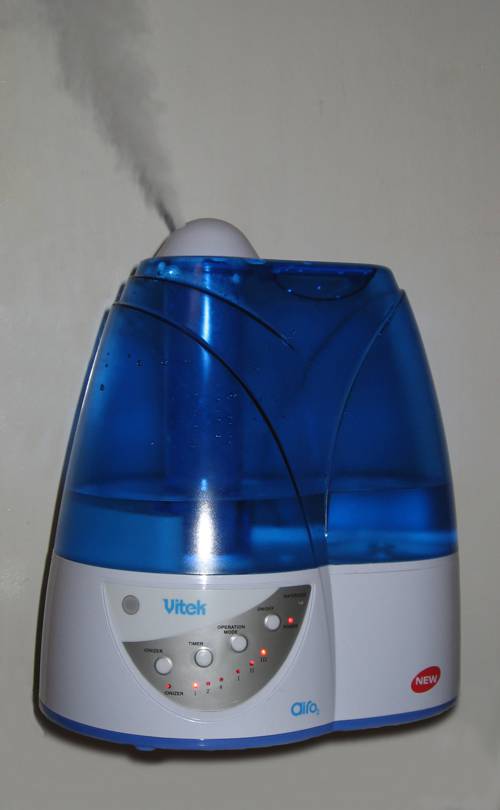
FAQ About Indoor Plant Humidity Control Devices

What are indoor plant humidity control devices?
Indoor plant humidity control devices are tools or appliances designed to help maintain optimal humidity levels for the health and growth of indoor plants. These devices help ensure that the humidity levels do not drop too low or rise excessively, which can affect plant health and growth. Common devices include humidifiers, dehumidifiers, and humidity trays, among others.

Why is humidity important for indoor plants?
Humidity is crucial for indoor plants because it affects their transpiration process—the way plants release moisture into the air. Optimal humidity levels promote healthy plant growth, improve nutrient uptake, and reduce the risk of pest infestations. Many tropical and subtropical plants thrive in higher humidity, so maintaining the right level is essential for these species.

How do humidifiers work for indoor plants?
Humidifiers work by emitting water vapor or steam into the air to increase humidity levels. For indoor plants, particularly those that prefer a humid environment, a humidifier helps mimic their natural habitat. There are different types of humidifiers including ultrasonic, evaporative, and steam vaporizers, each with its own mode of operation.

What types of humidifiers are best for indoor plants?
For indoor plants, ultrasonic and evaporative humidifiers are often recommended. Ultrasonic humidifiers are quiet and energy-efficient, using vibrations to create a fine mist. Evaporative humidifiers, on the other hand, use a fan to wick moisture from a wet filter into the air. Both options effectively increase humidity without significantly raising temperatures, making them ideal for maintaining plant health.

Can dehumidifiers be used for indoor plants?
Dehumidifiers are generally used to reduce excessive humidity levels that can lead to mold or mildew. While they are not typically used for plant care, in regions or rooms with very high humidity, they might be necessary to prevent diseases like root rot in certain plants. It's most important to balance humidity rather than simply increasing or decreasing it.

What is a humidity tray for plants and how does it work?
A humidity tray for plants is a shallow tray filled with pebbles and water, placed beneath plant pots. The water in the tray evaporates, increasing the humidity around the plant. This method is passive and essential in slightly raising humidity levels without using electricity, making it an eco-friendly option for small spaces or specific plants.

What humidity levels are ideal for most indoor plants?
Most indoor plants thrive in humidity levels ranging from 40% to 60%. However, tropical plants, such as ferns and orchids, prefer environments with humidity levels closer to 60% to 80%. It's important to know the specific needs of your plants to use humidity control tools effectively.

How can I measure humidity levels for my indoor plants?
You can measure humidity levels using a hygrometer, a device that provides a digital or analog readout of the humidity in the air. Some advanced models also measure temperature, helping you monitor the environmental conditions of your home or plant area. Placing a hygrometer near your plants can give you an accurate understanding of their surroundings.

Are there smart humidity control devices for plants?
Yes, there are smart humidity control devices available that can be controlled via smartphone apps or integrated with home systems like Amazon Alexa or Google Assistant. These devices allow you to set and monitor humidity levels remotely, providing precise control to ensure optimal conditions for your indoor plants.

Do all indoor plants require the same humidity levels?
No, different plants have varying humidity requirements. Tropical plants generally need higher humidity, while succulents and cacti prefer drier conditions. Understanding the specific needs of each plant type is crucial for maintaining their health and optimizing growth conditions.

Can I use a regular room humidifier for my indoor plants?
Yes, a regular room humidifier can be used for indoor plants, as long as it effectively raises the humidity to the desired level. Ensure the humidifier is placed at an appropriate distance from the plants to evenly distribute moisture and avoid over-saturation of foliage.

How often should I run a humidifier for my indoor plants?
The frequency of running a humidifier depends on the current humidity conditions and the needs of your specific plants. During dry months or in regions with low humidity, you may need to run the humidifier daily. Monitoring with a hygrometer helps determine how often it should be operated to maintain ideal conditions.

What signs indicate that my indoor plants need more humidity?
Signs that indicate your indoor plants may need more humidity include browning or crispy leaf edges, wilting, slower growth, and increased susceptibility to pests like spider mites. Observing these symptoms can help you adjust humidity levels promptly to protect plant health.

Can the humidity from indoor plants affect the overall room humidity?
Yes, a large number of indoor plants can slightly raise overall room humidity as they transpire. However, the change might not be significant unless there are numerous plants in a confined space. Supplementing with a humidifier is a more controlled method to manage room humidity.

What is a pebble tray and how does it benefit plants?
A pebble tray, similar to a humidity tray, involves placing a tray filled with pebbles and water under plant pots. As the water evaporates, it increases the surrounding humidity, benefiting plants by creating a micro-environment with higher humidity without soaking the roots.

Can I use a bowl of water to increase humidity for indoor plants?
A bowl of water placed near plants can slightly increase humidity as the water evaporates into the air, but the effect is minimal and might not be sufficient for tropical plants. Combining this method with other humidity-increasing strategies can be more effective.

What are the benefits of smart humidifiers for indoor plant care?
Smart humidifiers offer benefits such as remote control, scheduled humidity increments, and integration with other smart home systems. These features provide convenience and precision in maintaining optimal humidity levels, enhancing overall plant care with minimal manual intervention.

Can I use essential oils in a humidifier for plants?
It is generally not recommended to use essential oils in a humidifier for plants that are directly affected by the mist, as some essential oils can be harmful to them. If using oils for room scenting, ensure that the mist does not settle directly on the plants or choose plant-safe oils.

What is integrated humidity control and how does it work?
Integrated humidity control refers to systems that combine both humidifying and dehumidifying functions to maintain a balanced indoor environment. These systems automatically adjust to changes, ensuring ideal conditions for plant health, typically beneficial in regions with fluctuating humidity levels.

Are there any maintenance tips for humidity control devices used for plants?
Regular cleaning is essential to prevent mold and bacteria buildup in humidifiers. Use distilled water to minimize mineral deposit formation. For dehumidifiers, empty and clean water collection bins regularly. Check device filters and replace them as needed to ensure efficient operation.
